Questões de Concurso
Para profissional básico - ciências contábeis
Foram encontradas 354 questões
Resolva questões gratuitamente!
Junte-se a mais de 4 milhões de concurseiros!

Após a elaboração da Análise Horizontal (última coluna), em qual componente desse mesmo ativo verifica-se a maior variação positiva apurada em 2006 em relação a 2005?

Considerando-se o critério de margem de contribuição unitária, o produto que apresenta maior contribuição ou lucratividade é o Modelo
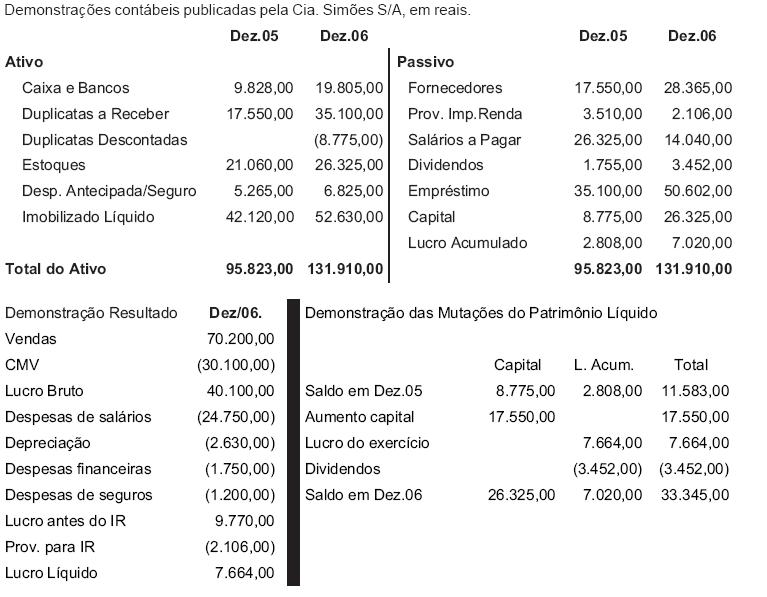
Na Demonstração do Fluxo de Caixa (DFC), método direto, Atividades Operacionais, o valor dos Pagamentos a Fornecedores, em reais, é
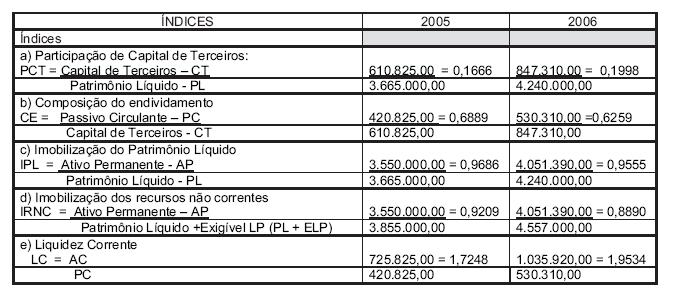
Com base nos dados acima, pode-se afirmar que o Capital Circulante Próprio da Companhia, em 2006, em reais, foi
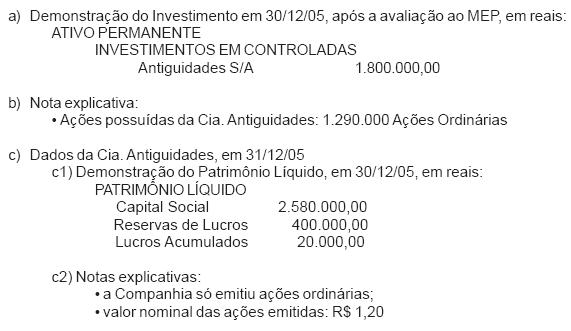
A Cia. Antiguidades, que no exercício encerrado em 31/12/06 apurou um Lucro Líquido de R$ 600.000,00, fez a proposta de distribuição de dividendos no valor de R$ 500.000,00 e apresentou a seguinte demonstração de seu Patrimônio Líquido, antes do reconhecimento do lucro apurado em 2006 e de sua respectiva distribuição:

Considerando, exclusivamente, as informações recebidas e a boa técnica de avaliação do investimento pelo Método da Equivalência Patrimonial (MEP), a receita do investimento, avaliado ao MEP, a ser contabilizada na controladora, Cia. Novidades, em reais, é
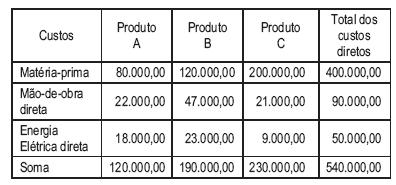
Sabendo-se que os custos indiretos usualmente alocado aos produtos por rateio, com base no custo da matéria-prima, totalizaram o valor de R$ 250.000,00 no mês, pode-se afirmar que o custo total do Produto C, em reais, é
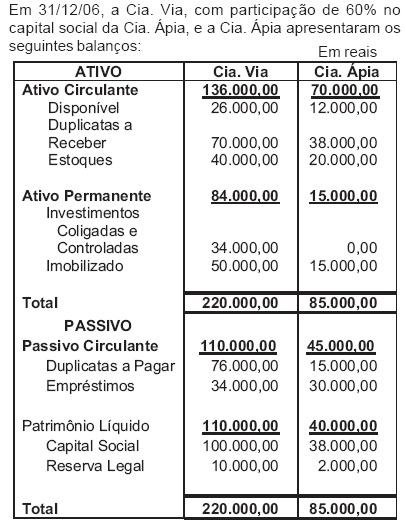
Sabendo-se que as companhias não têm transações comerciais entre si, pode-se afirmar que, no balanço consolidado, o montante do Ativo, em reais, é
No encerramento do exercício, a Investida apurou um Lucro Líquido de R$ 850.000,00, propondo a distribuição de dividendos de R$ 400.000,00, cabendo à Investidora o dividendo a receber de R$ 32.000,00.
Considerando as informações recebidas e todas as alternativas técnicas relativas ao registro e avaliação dos investimentos permanentes, compete à Investidora contabilizar
A mesma Deliberação estabelece, também, que, caso a companhia opte, para atender à legislação tributária, por contabilizar os juros pagos ou creditados como despesa financeira, deverá

Durante o exercício de 2006 ocorreram as seguintes situações:

Sabendo-se que a Cia. Gama S/A só possui ações ordinárias, cujo valor nominal em 31/12/06 era de R$ 1,20, o saldo da coluna Lucros ou Prejuízos Acumulados, em 31/12/06, considerando exclusivamente as informações recebidas, em reais, é

Considerando, exclusivamente, as informações recebidas e as determinações da Lei das Sociedades por Ações, no balanço de 31/12/06, os direitos a receber, classificados no Ativo Realizável a Longo Prazo, atingiram, em reais, o montante de
A Assembléia Geral de subscritores nomeou uma empresa especializada que, em laudo fundamentado, avaliou o conjunto de equipamentos em R$ 1.160.000,00.
A Assembléia Geral aprovou o valor dos equipamentos em R$ 1.148.000,00. Considerando as determinações da Lei no 6.404/76, com nova redação dada pelas Leis nos 9.457/97 e 10.303/01, a integralização do capital deve ser considerada pelo valor, em reais, de

Com base nos dados acima, pode-se afirmar que, na elaboração da Demonstração de Origens e Aplicações de Recursos, o total de origens, em reais, é
Em 2006, a Cia. Beta negociou sua participação acionária na Cia. X, apresentando as seguintes informações relativas a essa operação:

Em vista disso, a operação acima gerou para a empresa um(a)
is having an impact on the way people think about
datacenters. Companies around the world are
announcing ways to save energy and reduce costs by
5 buying new hardware and services. Yet, there is little
guidance on how you can take action to control energy
costs. In the past, electricity has been treated as an
overhead expense, like the cost of space. But with rising
power costs and issues regarding reliability, supply, and
10 capacity, electricity requires its own specific strategy.
Projects regarding performance optimization and
cost reduction are a part of everyday best practices in
nearly every area of business. So why not treat energy
cost in the same way?
15 As Information Technologies (IT) pros, many of us
make decisions about the configuration and setup of
servers, the specifications on the equipment our
organizations purchase, and the requirements for
datacenter upgrades and construction. We even provide
20 early design input during application development. When
it comes to these projects, we obviously have a golden
opportunity to be green and influence the energy
efficiency of any datacenter.
The first part of any strategy is to know your current
25 energy usage. You need to know where your energy is
used and by what specific equipment, as well as what
usage is efficient and what is wasteful in the datacenter.
Unfortunately, it's rare to find power-consumption
metering in place that can break down usage to a level
30 where people can see the results of their actions. Most
organizations typically only see a monthly power bill
that rolls up consumption into an overall bottom line.
This offers little incentive for saving energy since
individuals never see the impact of their decisions, and
35 there is no way for them to prove that their changes
have actually saved energy.
One of the first issues people confront when
considering a green datacenter initiative is whether they
have executive support. For the purpose of the article, I
40 am going to assume the answer is "not yet." Executive
support requires a serious commitment that provides
resources and budget for your initiative. And while there
is a lot of talk about green datacenters, the reality is
that there is still often a lack of serious support at the
45 executive level. If you did already have such executive
support, you would probably be running a green
datacenter right now.
Still, even assuming you are not getting the support
you need, there is a great deal you can do to push your
50 green datacenter initiative forward. So how do you
determine effective actions to take in achieving your
goals? Fortunately, energy efficiency is not a new
concept and there is a lot that IT pros can learn from
other industries. [.]
55 Anyway, for whichever direction you choose,
planning an energy efficiency program for your datacenter
will require collaboration across groups in IT. Until
recently, the typical approach to planning IT solutions
has been to ignore power costs early on during the design
60 phase, focusing on the hardware and software being
purchased, along with the labor and hosting costs of
the solution. When power is buried in the overhead cost
of running solutions in a datacenter, energy efficiency
is a low priority. Exposing the actual power being
65 consumed by solutions is the first critical step in changing
the behavior of your organization.
By Dave Ohara
TechNet Magazine, October 2007
is having an impact on the way people think about
datacenters. Companies around the world are
announcing ways to save energy and reduce costs by
5 buying new hardware and services. Yet, there is little
guidance on how you can take action to control energy
costs. In the past, electricity has been treated as an
overhead expense, like the cost of space. But with rising
power costs and issues regarding reliability, supply, and
10 capacity, electricity requires its own specific strategy.
Projects regarding performance optimization and
cost reduction are a part of everyday best practices in
nearly every area of business. So why not treat energy
cost in the same way?
15 As Information Technologies (IT) pros, many of us
make decisions about the configuration and setup of
servers, the specifications on the equipment our
organizations purchase, and the requirements for
datacenter upgrades and construction. We even provide
20 early design input during application development. When
it comes to these projects, we obviously have a golden
opportunity to be green and influence the energy
efficiency of any datacenter.
The first part of any strategy is to know your current
25 energy usage. You need to know where your energy is
used and by what specific equipment, as well as what
usage is efficient and what is wasteful in the datacenter.
Unfortunately, it's rare to find power-consumption
metering in place that can break down usage to a level
30 where people can see the results of their actions. Most
organizations typically only see a monthly power bill
that rolls up consumption into an overall bottom line.
This offers little incentive for saving energy since
individuals never see the impact of their decisions, and
35 there is no way for them to prove that their changes
have actually saved energy.
One of the first issues people confront when
considering a green datacenter initiative is whether they
have executive support. For the purpose of the article, I
40 am going to assume the answer is "not yet." Executive
support requires a serious commitment that provides
resources and budget for your initiative. And while there
is a lot of talk about green datacenters, the reality is
that there is still often a lack of serious support at the
45 executive level. If you did already have such executive
support, you would probably be running a green
datacenter right now.
Still, even assuming you are not getting the support
you need, there is a great deal you can do to push your
50 green datacenter initiative forward. So how do you
determine effective actions to take in achieving your
goals? Fortunately, energy efficiency is not a new
concept and there is a lot that IT pros can learn from
other industries. [.]
55 Anyway, for whichever direction you choose,
planning an energy efficiency program for your datacenter
will require collaboration across groups in IT. Until
recently, the typical approach to planning IT solutions
has been to ignore power costs early on during the design
60 phase, focusing on the hardware and software being
purchased, along with the labor and hosting costs of
the solution. When power is buried in the overhead cost
of running solutions in a datacenter, energy efficiency
is a low priority. Exposing the actual power being
65 consumed by solutions is the first critical step in changing
the behavior of your organization.
By Dave Ohara
TechNet Magazine, October 2007

